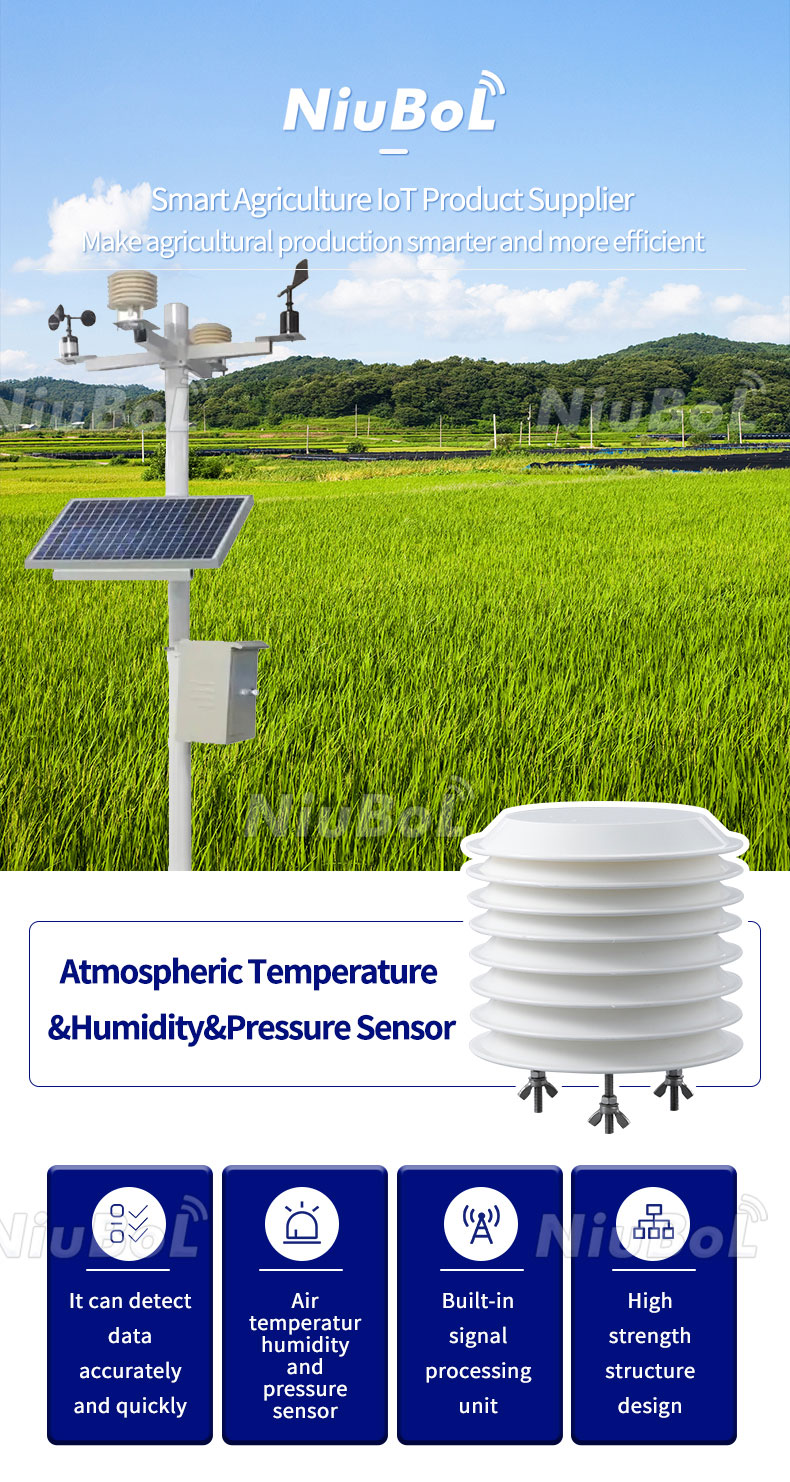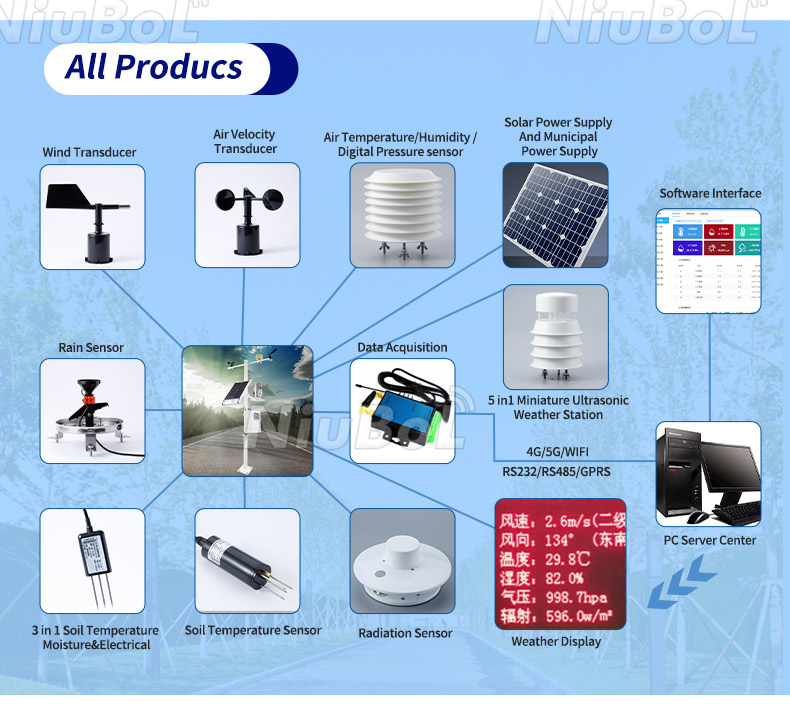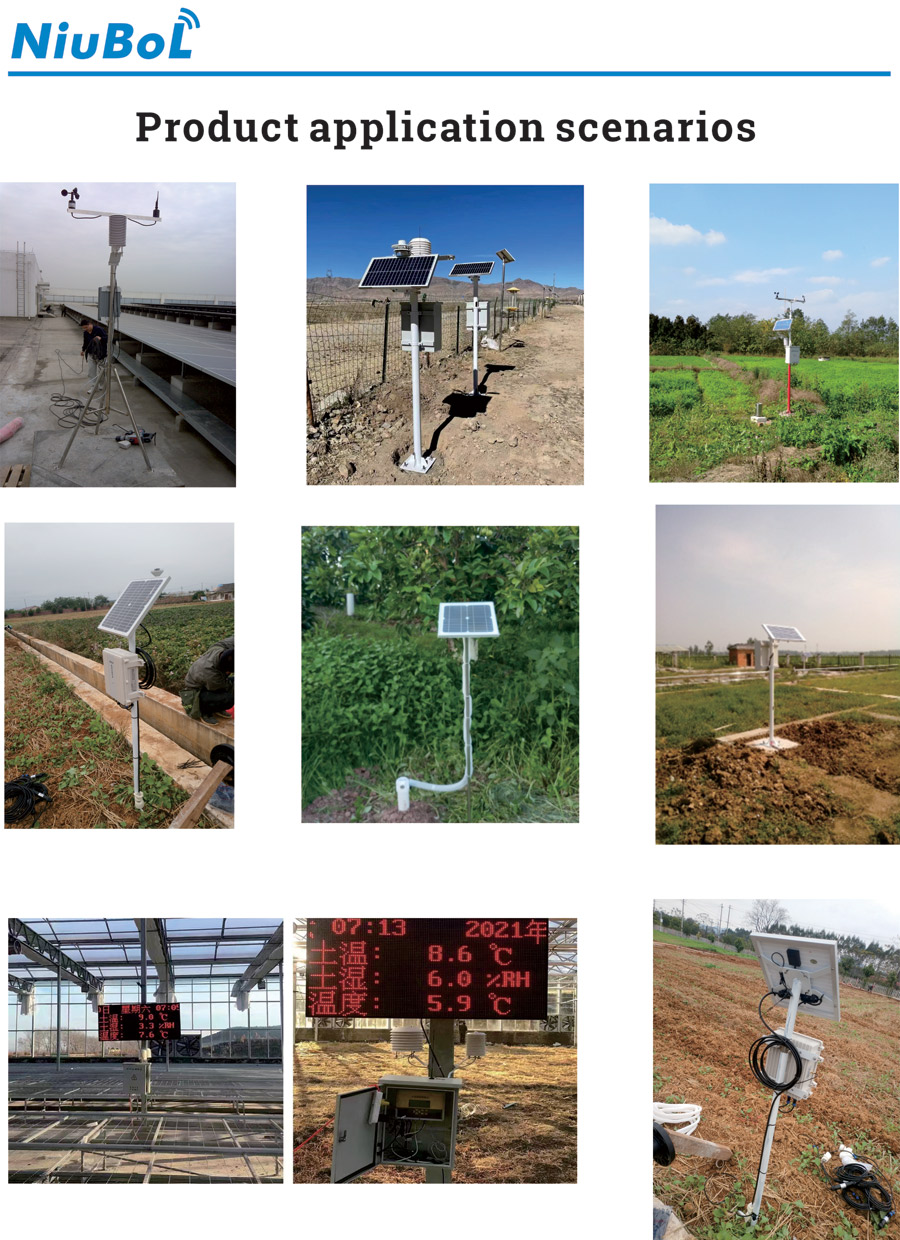

— Blogs —
—Products—
 Consumer hotline +8618073152920
Consumer hotline +8618073152920 WhatsApp:+8615367865107
Address:Room 102, District D, Houhu Industrial Park, Yuelu District, Changsha City, Hunan Province, China
Product knowledge
Time:2022-06-15 21:39:19 Popularity:659
Automatic weather stations are crucial for modern agriculture as they enable real-time monitoring of meteorological and environmental conditions, providing essential data that can guide farmers in optimizing their agricultural practices. Here’s an expanded explanation based on the points you've shared:

An automatic weather station (AWS) is an agricultural meteorological instrument designed to autonomously measure and record environmental conditions that are crucial for crop growth. These stations are typically equipped with a range of sensors that measure:
- Air Temperature and Humidity: Helps in understanding the overall climatic conditions and predicting possible weather-related risks like frost or heat stress.
- Soil Temperature and Moisture: Vital for irrigation management, helping to monitor soil health and determine when crops need watering.
- Light Levels: Important for photosynthesis, this helps optimize crop growth and adjust greenhouse lighting if needed.
- Rainfall: Monitoring precipitation helps with water management and flood prevention.
- Carbon Dioxide (CO2) Levels: This sensor tracks the level of CO2 in the air, which is directly linked to photosynthesis, and can help predict plant growth and productivity.
These stations collect, store, and transmit data to a centralized system for analysis. This provides farmers with valuable insights to improve their crop management strategies.
Automatic weather stations, such as those produced by NiuBoL, integrate various agricultural meteorological technologies. They typically feature:
- Stainless Steel Construction: Ensures durability and resistance to harsh weather conditions.
- Waterproof Design: Essential for functioning outdoors, especially in variable weather conditions.
- Solar Energy and Battery Operation: This makes the weather station self-sufficient, eliminating the need for external power sources.
- Remote Data Collection: The station can independently monitor environmental conditions without requiring constant human intervention. This data is transmitted for remote monitoring, allowing farmers to access it from anywhere.

1. Precision Agriculture: The data gathered by the weather station allows for precise environmental monitoring. This leads to optimized crop management practices, reducing the risks associated with climate variability.
2. Improved Crop Yield and Quality: By continuously monitoring weather conditions and soil health, farmers can make timely decisions about irrigation, fertilization, and crop protection, ensuring better yields and crop quality.
3. Disaster Prevention: The station helps predict extreme weather events such as frost, drought, or heavy rainfall, allowing farmers to take preventive measures to protect crops. For instance, automated irrigation systems can be activated during drought conditions, or frost protection methods can be initiated when temperatures fall below certain thresholds.
4. Data-Driven Decision-Making: The collected data, when analyzed, helps farmers make data-driven decisions about planting schedules, irrigation management, pest control, and crop rotation. This leads to better resource management and reduced wastage.
5. Sustainability: The ability to monitor environmental conditions in real-time supports sustainable farming practices by optimizing resource use (like water and fertilizers), reducing environmental impact, and increasing agricultural efficiency.
6. Wider Applications: Beyond crop production, automatic weather stations are also used in forestry, horticulture, and animal husbandry to monitor environmental conditions that affect plant and animal health.

Conclusion
The automatic weather station is an essential tool for modern agriculture, combining the power of meteorological monitoring and technology to improve productivity and sustainability. By providing real-time data on key weather and environmental parameters, farmers can optimize their crop management strategies, prevent potential weather-related losses, and ultimately enhance both yield and quality. Furthermore, these stations contribute significantly to the overall modernization of agricultural practices by facilitating intelligent management of agricultural environments.
Prev:Application of Automatic Weather Station in Modern Agriculture
Next:Greenhouse Smart Agricultural Meteorological Observation Station
Related recommendations
Sensors & Weather Stations Catalog
Agriculture Sensors and Weather Stations Catalog-NiuBoL.pdf
Weather Stations Catalog-NiuBoL.pdf
Related products
 Combined air temperature and relative humidity sensor
Combined air temperature and relative humidity sensor Soil Moisture Temperature sensor for irrigation
Soil Moisture Temperature sensor for irrigation Soil pH sensor RS485 soil Testing instrument soil ph meter for agriculture
Soil pH sensor RS485 soil Testing instrument soil ph meter for agriculture Wind Speed sensor Output Modbus/RS485/Analog/0-5V/4-20mA
Wind Speed sensor Output Modbus/RS485/Analog/0-5V/4-20mA Tipping bucket rain gauge for weather monitoring auto rainfall sensor RS485/Outdoor/stainless steel
Tipping bucket rain gauge for weather monitoring auto rainfall sensor RS485/Outdoor/stainless steel Pyranometer Solar Radiation Sensor 4-20mA/RS485
Pyranometer Solar Radiation Sensor 4-20mA/RS485
Screenshot, WhatsApp to identify the QR code
WhatsApp number:+8615367865107
(Click on WhatsApp to copy and add friends)